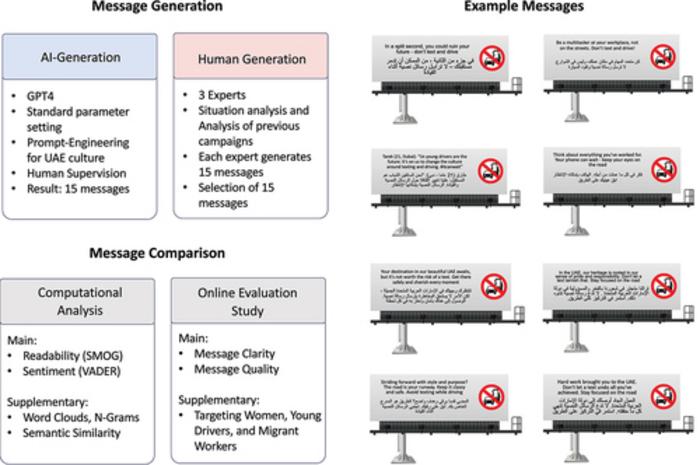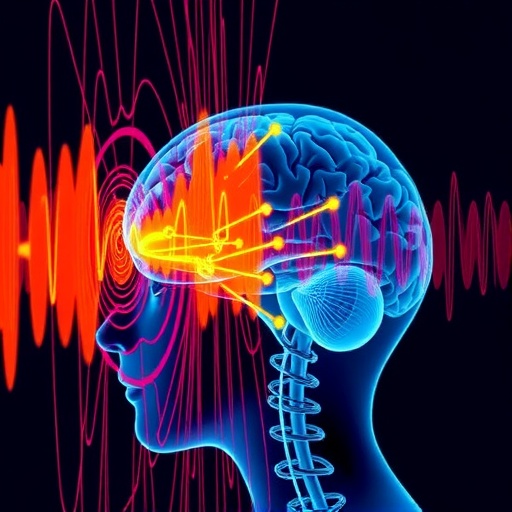
A recent study published in Global Health Action reveals intriguing insights about the effectiveness of Arabic health messages generated by artificial intelligence (AI). The research takes a deep dive into the quality and tone of these automated messages while contrasting them with those crafted by human communicators. Conducted by a team led by Dr. Syed Ali Hussain from the University of Sharjah, the study’s findings hold significant implications for public health communication, especially in Arabic-speaking regions.
The research employed a robust methodology that included a computational analysis alongside an online evaluation involving 186 participants from the United Arab Emirates (UAE). This comprehensive approach allowed the researchers to gather valuable data, comparing AI-generated text against its human-generated counterparts. The analysis highlighted that the messages produced by AI generally exhibited a more optimistic sentiment. Given the vast datasets on which AI systems are trained, this tendency towards positive messaging is both noteworthy and indicative of how these systems prioritize certain linguistic features.
Moreover, it becomes essential to delve into the reasons behind the clearer communication style often employed by human authors as opposed to AI-generated text. The intricacies of human language, infused with cultural nuances and contextual understanding, present challenges that AI may not yet fully grasp. This gap raises important questions about the authenticity and relatability of health messages created by machines when it comes to engaging diverse audiences.
Understanding the significant cultural and historical context of the Arabic language, which is spoken by around 500 million people, is crucial to appreciating the potential of AI in language generation. While the technology offers a scalable and cost-effective means of producing health communication, the implications of its limitations on cultural representation cannot be overlooked. The ability to produce messages that resonate deeply with a community relies on a nuanced understanding of local dialects and their subtleties.
Dr. Hussain’s study also brings attention to the area of message clarity. Although findings indicated no substantial differences in overall quality ratings between AI and human-generated messages, human messages were notably rated higher in clarity. This distinction stresses the necessity of human oversight in AI-generated content, especially when crafting public health messages that need both accuracy and accessibility.
AI’s potential to augment human creativity in content generation is underscored in the study. Dr. Hussain suggests that the optimal path forward may reside in a hybrid model that harnesses the speed and efficiency of AI while relying on human expertise to ensure quality and cultural sensitivity. By combining the strengths of both AI and human communicators, public health organizations can potentially improve outreach efforts and effectiveness, particularly in linguistically and culturally diverse regions.
Another critical aspect of the research was the focus on Modern Standard Arabic (MSA), the formal language used in media, education, and literature. Despite its prevalence in formal communications, MSA is not commonly used in casual conversations where regional dialects take precedence. This distinction emphasizes the role of MSA as a bridge uniting Arabic-speaking cultures and its influence on health and education technologies. It suggests that more attention needs to be directed toward developing AI models specifically geared for the Arabic context that can proficiently produce content in both MSA and local dialects.
As a key finding, the computational analysis revealed that while AI-generated messages had a more positive sentiment, clarity remained a significant differentiator—the human-generated messages were evidently superior in their clarity ratings. This suggests a pressing need for the development of Arabic-centric AI language models, trained on diverse corpora that encapsulate the full spectrum of Arabic linguistic identity. Such an endeavor would aid in capturing the rich nuances and intricate cultural contexts of the language itself.
The study argues for a decisive and continuous evaluation of AI-generated content, demonstrating that while AI has notable capabilities, its text generation with respect to cultural significance still requires improvement. Leading to the conclusion, researchers advocate for further exploration and refinement of AI claims in health communication to craft messages that are both effective and appropriate within their respective cultural contexts.
Additionally, the authors stress that as AI technology evolves, organizations must remain vigilant about ensuring the accuracy and appropriateness of machine-generated content. In doing so, they can effectively navigate the challenges posed by AI’s limitations while fully realizing its potential in enhancing public health initiatives.
The debate around AI in health communication is poised to grow, especially as the integration of technology and public discourse becomes more pronounced. This study serves as a pivotal reference point for future investigations into bridging the gap between AI capabilities and human communicative excellence. The nuances observed in the AI-generated Arabic messages versus those of human creators underline the complexity of linguistic expression and the necessity of an ongoing dialogue about technology’s role in communicative contexts.
In conclusion, as health organizations look to harness the capabilities of artificial intelligence in public messaging, the need for human intervention, particularly in areas demanding clarity and cultural relevance, cannot be underestimated. The dialogue sparked by Dr. Hussain’s study underscores the importance of combining technological innovation with human expertise to drive effective and culturally resonant health communication strategies forward.
Subject of Research: AI and Human-generated Health Messages
Article Title: Comparing AI and Human-generated Health Messages in an Arabic Cultural Context
News Publication Date: February 4, 2025
Web References: Global Health Action
References: DOI: 10.1080/16549716.2025.2464360
Image Credits: Global Health Action
Keywords: Health Communication, Artificial Intelligence, Arabic Language, Public Health, Cultural Sensitivity, Message Clarity
Tags: AI-generated health messagesArabic health communicationautomated health informationclarity in health messagingcomputational analysis in health communicationcultural nuances in communicationDr. Syed Ali Hussain studyeffectiveness of AI in health communicationhuman vs AI messagingpublic health implicationssentiment analysis of health messagesUAE public health research





